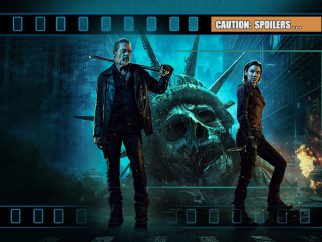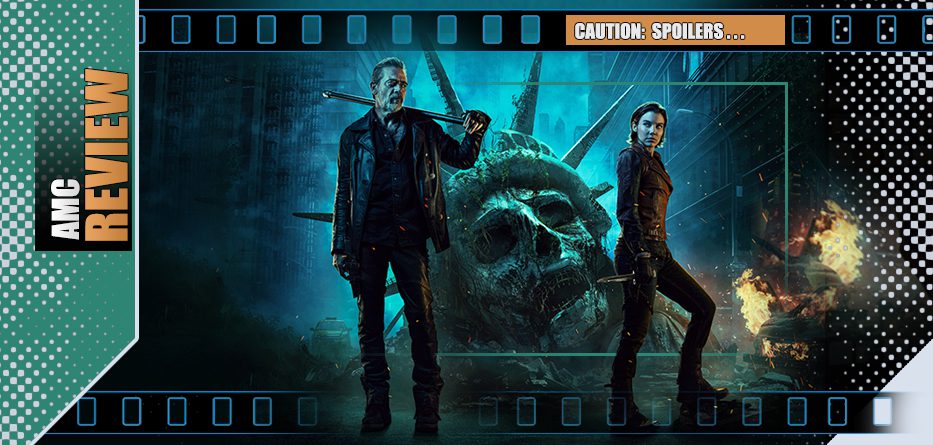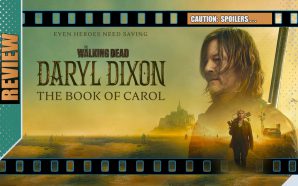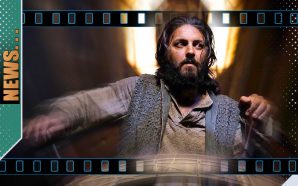Several years after the events at the end of The Walking Dead, Maggie is on a desperate journey. Her home raided and her son, Hershel, snatched away, Maggie heads towards New York, where she knows he is being held by an enforcer known only as ‘The Croat’. But to get to him, she’s going to need help and the only person who knows ‘The Croat’ well enough to get close to him is… Negan.
Negan is a wanted man, not so much reformed as laying low and keeping his powder dry, but Maggie ‘convinces’ him to help her….and all the while the two are pursued by a lawman determined to bring Negan in for past crimes.
With enemies on all sides, can the two survivors possibly take Manhattan?
*spoilers*
Had anyone, over a decade ago, moved forward in creating an Escape from New York television series, there’s a very good chance it would have looked a lot like the new The Walking Dead spin-off, Dead City – only it might have looked a bit better. After all, with the launch of the show, it’s hard to escape the obvious iconic leanings by AMC in that film’s direction – dark skyscrapers and a forlorn, seen-better-days head of the Statue of Liberty being front and centre on promotional imagery – heroes standing resolutely middle-frame while chaos looms around them. The most obvious stumbling block is that to do any such high-concept justice in the modern age, you need convincing skylines, recognisable landmarks, wide-scale urban decay and a budget to match. Unfortunately, the latest attempt to widen the canvas of its zombie dystopia franchise stumbles on several of these speed-bumps. While we’ve swapped the rural sprawl of Georgia for the misbegotten back-streets of supposed Manhattan (actually filmed in New Jersey) and it suffices in the short term as a foreground and lens-pulled backdrop with scattered vehicles and concrete mazes… the wider in-situ pushbacks falter and are rather obviously inferior composite artwork. In short such a big story concept needs a big canvas to present it and Dead City has merely changed the palette and hue rather than upped its game. Such middling efforts might have passed muster even a few years ago, but with the benchmark of screen VFX rising by the day for discerning viewers, those backgrounds now feel like the window-dressing they are. Less vigour, more mortis.
It’s also a shame that the series underwent a title change during production. Originally going with Isle of the Dead, it was statement of intent and a nice play on words (sounding more like I Love the Dead, mocking the classic NYC t-shirt motto) it shifted to a far more generic Dead City which feels, at best, like a placeholder itself.
There are some fun moments. Dead bodies hurled/falling/dropping into the streets below is effective and an old-school way of practical effects, a rat appearing from a cadaver’s mouth is suitably yucky and post-production gives us some CGI cockroaches that make you genuinely squirm (Negan’s simple ‘Nope‘ as he exits the infested dump sums it all up).
Jeffrey Dean Morgan has always been fun as Negan – a villain that you hate for his actions but with the almost-redemptive charisma that works best when you don’t know what he’ll do next – save himself or others? Here he’s going through the motions, the same character as we’ve known but pulled along by the plot rather than flexing his muscles and pushing at the boundaries. Lauren Cohan as Maggie developed her own killer instinct during The Walking Dead and early scenes in this spin-off show she’s no less driven or desperate, willing to be violent and ruthless as the situation demands. Both characters see a little of themselves in the other, though neither would admit it or like it.
Beyond the showcasing of two popular but adversarial series characters, it’s also hard to appreciate the narrative thinking of giving them a combined spin-off. Shows like The Last of Us raised the bar and invested huge budgets but kept their audiences by making the characters seem real and human. Here Maggie and Negan remain the archetypes they had already become. In the final season of The Walking Dead, Negan and Maggie circled each other with potentially murderous intent and then worked out a cautious and pragmatic truce. They didn’t exactly work through their differences – it would be hard to be best mates with the guy who clubbed your husband to death with a baseball bat and a bloody smile – but there was an understanding that they would tolerate each other for their skill-sets and reason of basic individual and group survival. In short, the dangerous dynamic between them played out about as well as it ever could. But going with the ‘reluctant partners’ angle for their story and a classic ‘I don’t trust you, but I need you‘ mission statement, Dead City essentially just resets it all, almost as if that strained entente cordiale never evolved… and that makes their journey and snark repetitive and far less interesting. In some productions it works, sexual tension brimming over as enemies become frenemies and then something more, but there’s zero chance of that happening here for obvious reasons and so it all becomes just another survival game, as played out over a decade of TWD wanderings. Equally, it necessitates the convenient writing out Negan’s wife and child, for whom he fought so valiantly during the mothership’s final days – their situation or fate left conveniently unspoken and adrift in the series opener. In both cases, it feels contrived… producing a dead end or rinse and repeat stalemate.
Amid characters that should have obvious ‘upcoming collateral damage’ tattooed on their foreheads, there’s a few familiar faces. Recent Picard stalwart Michelle Heard makes an early appearance as an aggressive local enforcer but an early demise feels like it’s little more than a cameo. Zeljko Ivanek has long been a go-to villain for numerous tv shows and here essays a bad guy known as The Croat, – explained as a previous henchman of Negan’s but one that even Negan described as unhinged (when and how did they part ways, we don’t know yet). But again, the show had a raft of manic big-bads and so far The Croat doesn’t feel distinctive, just conveniently nasty. In another familiar trope, Gaius Charles plays a Marshall named Armstrong whose spent considerable and effort and time tracking Negan and will be a thorn or ally to our ‘heroes’ as they pursue their own imperative. Mahina Napoleon plays Ginny, the young girl whom Negan (obviously aware of the dystopian-daddy memes) is looking after at the start and who has remained mute since watching her own father die (Seriously… mute kids have quickly become a convenient tv- trauma staple) and Logan Kim takes over the role of a slightly older and more antagonistic Hershel.
There’s nothing fundamentally wrong or right about Dead City thus far… it kills time with familiar faces and formulas and for die-hard fans and casual viewers of The Walking Dead alike that may suffice… and there’s undoubtedly potential if the series chooses to go a bit deeper than simply reanimating its past stories and mimicking its genre influences. (At only six episodes and with a smaller cast, there’s a possibility it will be kept brisk and streamlined, unlike latter seasons of the mothership). But every new show – franchise or not – should have something new to say and unfortunately, the opener is more broad strokes than Broadway.

- Story7
- Acting8
- Direction8
- Production Design / VFX7












